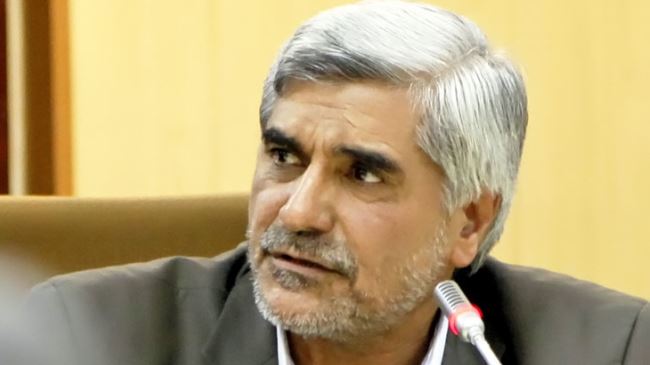[caption id="attachment_130852" align="alignright" width="224"]
 Iranian Minister of Science, Research and Technology Mohammad Farhadi[/caption]
Iranian Minister of Science, Research and Technology Mohammad Farhadi[/caption]TEHRAN (FNA)- Iranian Science Minister Mohammad Farhadi underlined that the country's aerospace industry is experiencing its glorious moments with greater successes at the door.
"Iran's space industry is on the verge of a major leap and if the needed mechanisms are provided, the technology will take the country to the higher peaks in the space (industry) in the next few years, and will increase the national honor," Farhadi said in a message to the inauguration ceremony of the 14th conference of Iran's Aerospace Association in Tehran on Tuesday.
Noting that the 300-bln-dollar outcome of the aerospace industry indicates its growing development in different military and civilian fields, he said, "Of course, the Islamic Republic of Iran has stood among the ten world countries with satellite building and launching technology after it sent Omid (Hope) satellite (into the orbit)."
Farhadi stressed that the rapid growth of satellite telecommunication and different uses of satellites, including navigation, environmental issues and quake-prone zones through aerospace systems, show the necessity for further investment in this arena.
Omid (hope) was Iran's first research satellite that was designed for gathering information and testing equipment. After orbiting for three months, Omid successfully completed its mission without any problem. It completed more than 700 orbits over seven weeks and reentered the Earth's atmosphere on April 25, 2009.
In relevant remarks in February, Iranian Minister of Communications and Information Technology Mahmoud Vaezi announced the country's plans to widen its home-grown space program to make more applied and national uses of the technology.
"The first 10-year (development) plan is ending and we will use all the power of our specialists seriously to obtain our (applied) goals in the second 10-year (development) plan," Vaezi said, addressing a ceremony to commemorate the space technology day in Tehran.
"It is now time for us to leave behind the first stage of the country's space program, which mostly focused on testing (in the first 10 years) and make more tangible uses of the space technology (in the second decade)," he added.
Vaezi stressed that Iran should have its national and special satellite for various communication, geographical and technological purposes, and said, "Plans to build and launch home-made satellites (for applied uses) will be pursued seriously in the second 10-year plan."
Iran has so far sent several home-made satellites into space for testing the various sections of its space program, including building of satellites, satellite carrier rockets, launch platforms, land stations, mobile stations, etc.
Earlier this month, Iran sent its fourth home-made satellite, Fajr (Dawn), into the orbit on the back of the home-made Safir-e Fajr launcher.
After ordering its launching, Iranian President Hassan Rouhani said the country had ushered into a new era of aerospace technology by sending a new home-made satellite into orbit.
"The prominent Iranian scientists and thinkers have entered a new stage in area of space sciences," Rouhani said after the launch.
"The government is determined to continue the path of national progress and God willing, we will reach a stage in the coming when all the country's needs in the space field will be met by the hands of the powerful Iranian scientists and based on indigenized technology," he added.
In October, Deputy Head of Iran Space Agency (ISA) Hamid Fazeli announced that Tehran was preparing to orbit three new home-made satellites, called Zafar (Triumph), Tolou (Sunrise) and Pars, from more powerful launchers and on the back of bigger carriers in the near future.
"Launching the under-construction satellites, including Sharifsat and Nahid, are also among the short-term plans of the ISA," he added.
Also, Iranian Vice-President for Executive Affairs Mohammad Shariatmadari told reporters in the same month that Iran hoped that its Sharifsat satellite would be sent into orbit this year.
Fazeli had announced in May that Iran planned to launch three home-made monitoring satellites into orbit in the next Iranian calendar year (March 2015-March 2016).
"Zafar, Tolou and AUT Sat will be sent into space onboard the Simorq satellite carrier," he said.
Fazeli noted that the satellites would transmit images of the Earth's surface to ground stations.
Zafar will be sent into a geostationary orbit, which is a circular orbit around 36,000 kilometers (22,320 miles) above the Earth's equator.
The satellite will reportedly have a lifespan of one year and six months, and will capture images and transmit them to stations on earth.
Tolou satellite will also carry out remote sensing and topography missions, and will travel in an orbit of 500 kilometers above from the Earth�s equator.
By Fars News Agency










